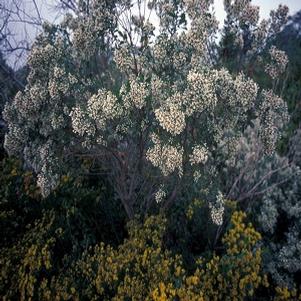General Description
Bloom Description: Though grasses' flowers tend to be inconspicuous, wavy-hair grass produces large, airy, flowers that appear at the tops of stalks in July-August. Flower stalks can reach 25-30” in late spring, giving the impression of a silvery-purple mist.
Growth Habit & Shape: Deschampsia has a clumping habit with low basal foliage, typically lower than 1’, with thin and delicate arching leaf blades that remain evergreen.
Soil Preferences: This is a common plant in dry, upland, open forested areas in New England, but also a key component of low, sandy and dry grasslands or barrens—it thrives in dry, acidic sites, but also looks great in average, slightly moister garden soil.
Root Description: The roots are very fine, tangled, and densely packed.
Garden Uses: This is a common plant in dry, upland, open forested areas in New England, but also a key component of low, sandy and dry grasslands or barrens—it thrives in dry, acidic sites, but also looks great in average, slightly moister garden soil.
Best Management & Maintenance: Wavy-hair grass can handle mowing once or twice a year, and flower stalks can be cut back as desired. Otherwise, no maintenance is needed on established plants.
Common Problems: Rabbits like the tender new growth on the basal leaves, but their browse does not typically kill the plant.
Benefits
Wildlife Benefits: Deschampsia flexuosa provides forage and habitat for herbivorous and other insects, especially when overwintering. Seeds are eaten by birds.
Other Practical/Environmental Benefits: Stabilizes soil, especially in shady, dry spots.
Use in place of: common turf grasses, ecologically non-functional ornamentals, mulch.
Ecology
Habitat:
Wavy-hair grass is found in heathlands, alpine or subalpine zones, cliffs, balds, or ledges, forests, grassland, mountain summits and plateaus, ridges or ledges, and woodlands.
Response to Disturbance: As with many graminoids, Deschampsia establishes readily after clear-cutting, and its easy-going germination requirements allow it to grow readily in new areas when direct-sown. Plants easily survive rabbit browse and mowing.
Native State Distributions:
Canada: NB , NL , NS , PE
USA: AK , AL , AR , CT , DC , DE , GA , KY , MA , MD , ME , MI , MN , NC , NH , NJ , NY , OH , OK , PA , RI , SC , TN , VA , VT , WI , WV
Wetland indicator status: FACU
References
Return to Top
